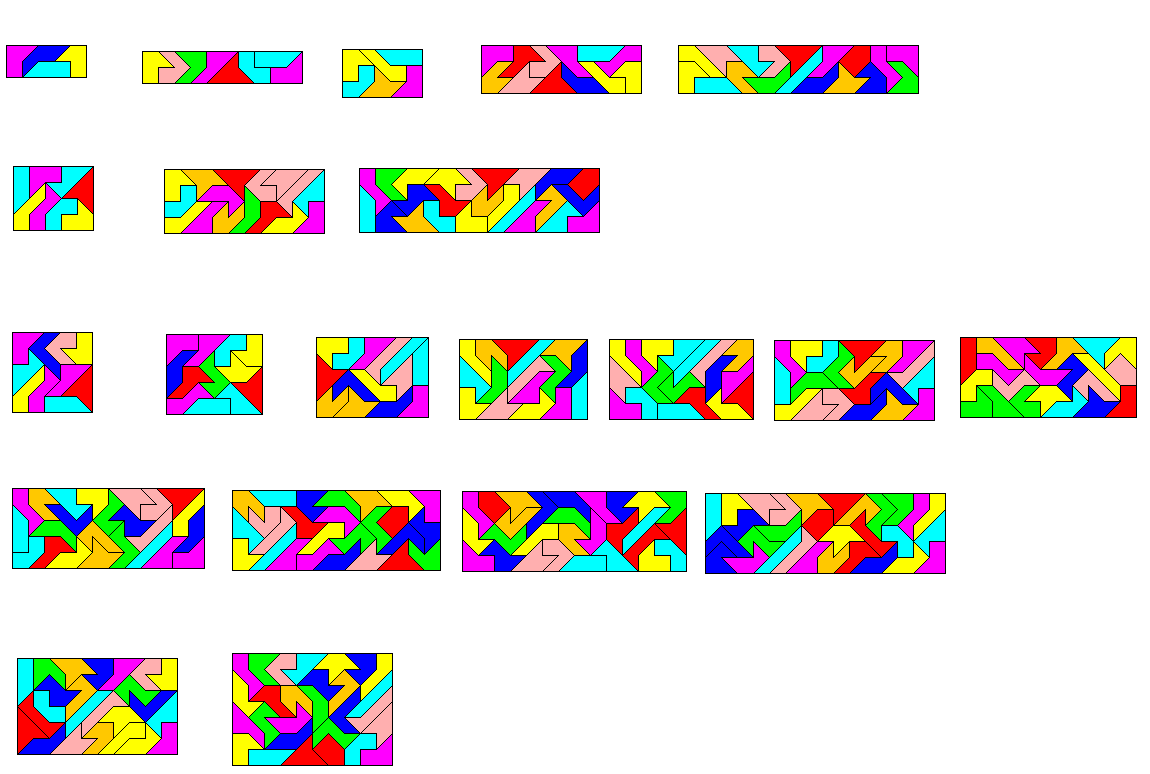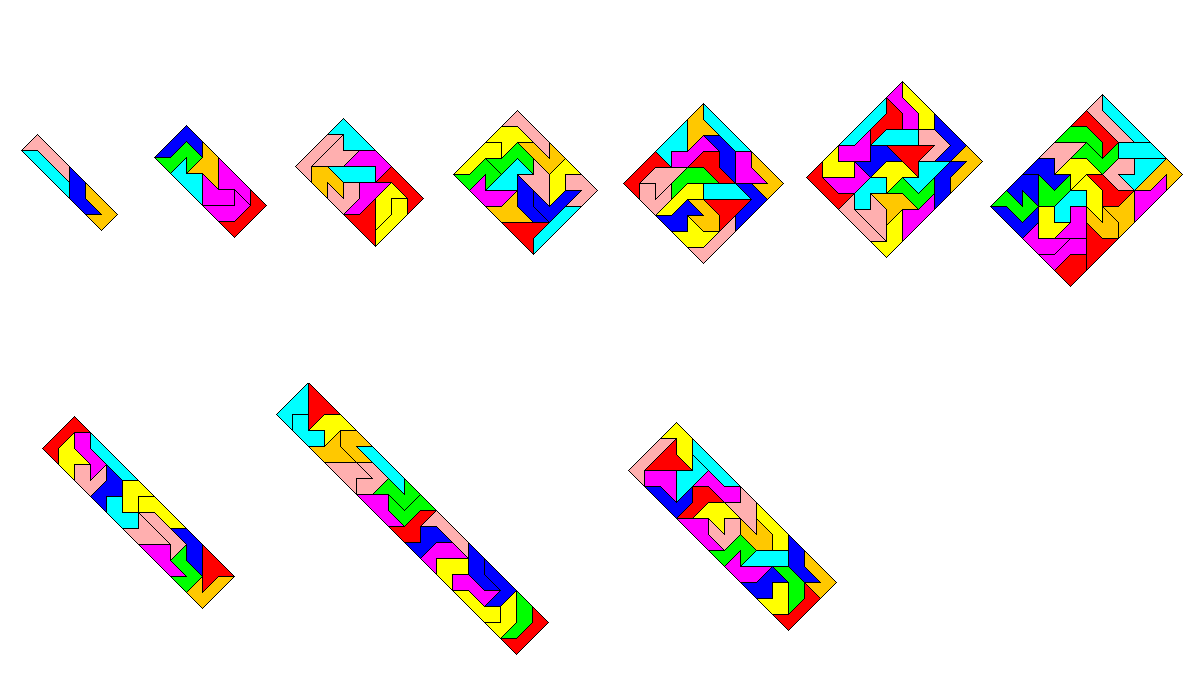


| group | pieces | maximum number of covered edge squares | |
|---|---|---|---|
| height = 3 | height = 2 | ||
| A | 
| 3 | 3 |
| B | 
| 2 | 3 |
| C | 
| 2 | 2 |
| D | 
| 1 | 2 |
| E | 
| 1 | <= 1 |
| F | 
| 0 | 0 |
| rectangle | pieces | edge squares | edge squares covered at most |
|---|---|---|---|
| 2 x 15 | 12 | 30 | 3x3(A)+2x3(B)+7x2(C)=29 |
| 2 x 20 | 16 | 40 | 3x3(A)+2x3(B)+7x2(C)+4x2(D)=37 |
| 2 x 25 | 20 | 50 | 3x3(A)+2x3(B)+7x2(C)+5x2(D)+3x1(E)=42 |
| 2 x 30 | 24 | 60 | 3x3(A)+2x3(B)+7x2(C)+5x2(D)+7x1(E)=46 |
| 2 x 35 | 28 | 70 | 3x3(A)+2x3(B)+7x2(C)+5x2(D)+10x1(E)+1x0(F)=49 |
| 3 x 20 | 24 | 42 | 3x3(A)+2x2(B)+7x2(C)+5x1(D)+7x1(E)=39 |
| 3 x 25 | 30 | 52 | 3x3(A)+2x2(B)+7x2(C)+5x1(D)+10x1(E)+3x0(F)=42 |